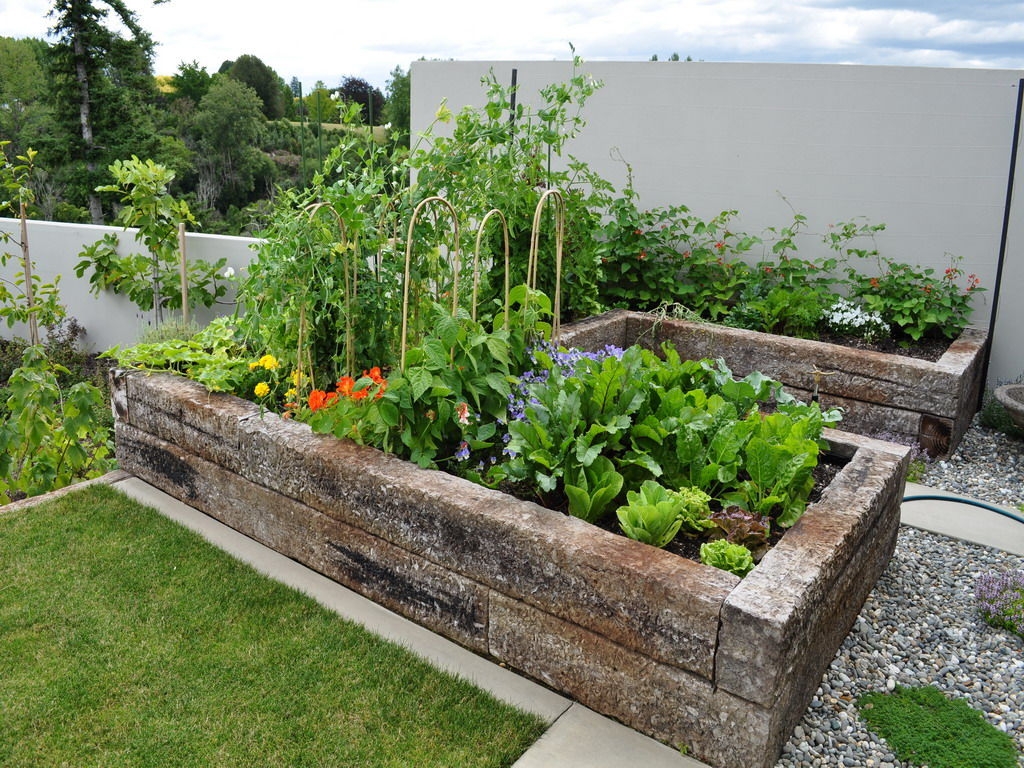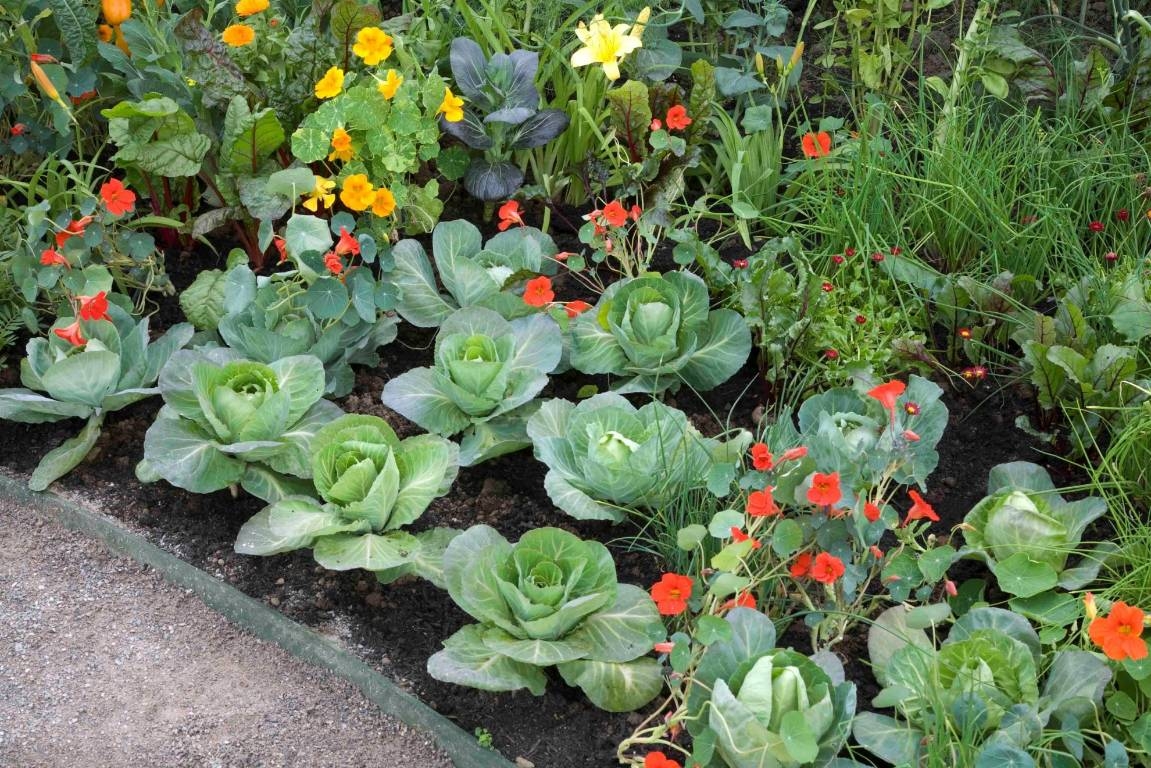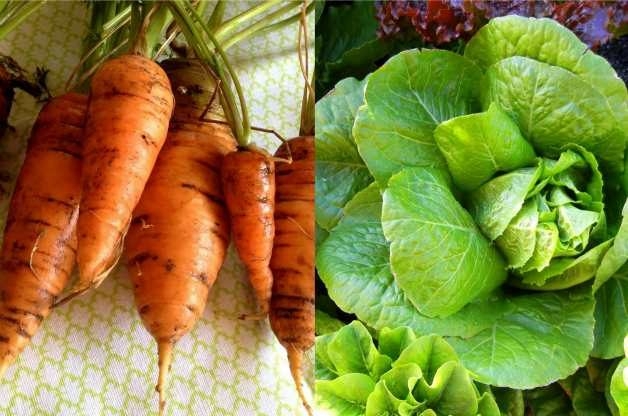How to Grow Vegetables at Home for Beginners?
 |
| Photo: Better Homes and Gardens |
Vegetable gardening at home is a great way to save money while you get up close and personal with nature. For example, even just one plant can be super affordable (think $3 to $5) and provide up to 10 pounds of tomatoes over the season (which can easily run you $20 or more). Growing tomatoes and other favorite vegetables or herbs from seeds can save you even more money. You’ll also find that the flavor and texture of garden-grown produce are even better than what you're used to finding at the grocery store. Plus tending your vegetable garden counts as exercise!
Let KnowInsider introduce you to these tips and tricks to grow the best vegetable garden.
Develop a practical plan
The first step to growing a healthy garden is marking off exactly where you want the beds to go. Consider the size, shape, and location of your garden to figure out the best set-up for you. Keep in mind that it can always be changed over time if necessary, according to Good Housekeeping.
Start with a small garden
 |
| Photo: The Quad City Times |
If you’re a beginner, start small. It’s better to be thrilled by what you produce in a small garden than being frustrated by the time commitment a big one requires. Plus, it makes sense to learn gardening basics before investing tons of time and money in this new hobby. You’ll get a feeling for how much time gardening takes, The Guardian cites. You’ll find out if you like spending time outside planting, watering, and weeding. You’ll learn how much produce you and your family can eat over the course of a summer.
A good size for a beginner’s vegetable garden is 10x10 feet, about the size of a small bedroom. Keep it simple. Select up to five types of vegetables to grow, and plant a few of each type. You’ll get plenty of fresh produce for your summer meals, and it will be easy to keep up with the chores. If 10x10 feet seems intimidating, you can go smaller (the veggies won’t mind) or consider growing vegetables in containers. With them you don't even need a yard; a sunny deck or balcony works fine.
Pick the right location
Picking a good location for your garden is absolutely key. A sub-par location can result in sub-par veggies! Here are a few tips for choosing a good site:
Plant in a sunny location. Most vegetables need at least 6 hours of direct sunlight per day. There are a few veggies (mostly the leafy ones) that will tolerate some shade.
Plant in moist, well-drained soil. If you have poorly drained soil where water pools, plant veggies in a raised bed for improved drainage. Wet soil means wet roots, which can turn into rotted roots. If you have rocky soil, till and remove the rocks, as said by Almanac.
Plant in a stable environment. Avoid places that receive strong winds could knock over your young plants or keep pollinators from doing their job. Nor do you want to plant in a location that receives too much foot traffic or floods easily. Plant in a location that would make Goldilocks smile.
Aim to plant crops in triangles rather than rows
 |
| Photo: Stuff.co.nz |
To get the maximum yields from each bed, pay attention to how you arrange your plants. Avoid planting in square patterns or rows. Instead, stagger the plants by planting in triangles. By doing so, you can fit 10 to 14% more plants in each bed.
Just be careful not to space your plants too tightly. Some plants won’t reach their full size — or yield — when crowded. For instance, when one researcher increased the spacing between romaine lettuces from 8 to 10 inches, the harvest weight per plant doubled. (Remember that weight yield per square foot is more important than the number of plants per square foot.)
Overly tight spacing can also stress plants, making them more susceptible to diseases and insect attacks.
Try climbing plants to make the most of space
No matter how small your garden, you can grow more by going vertical. Grow space-hungry vining crops—such as tomatoes, pole beans, peas, squash, melons, cukes, and so on—straight up, supported by trellises, fences, cages, or stakes.
Growing vegetables vertically also saves time. Harvest and maintenance go faster because you can see exactly where the fruits are. Fungal diseases are also less likely to affect upward-bound plants s thanks to the improved air circulation around the foliage.
Try growing vining crops on trellises along one side of raised beds, using sturdy end posts with nylon mesh netting or string in between to provide a climbing surface. Tie the growing vines to the trellis. But don’t worry about securing heavy fruits. Even squash and melons will develop thicker stems for support.
Choose the right pairings
 |
| Photo: Birds and Blooms |
Interplanting compatible crops saves space, too. Consider the classic Native American combination, the “three sisters:” corn, beans, and squash. Sturdy cornstalks support the pole beans, while squash grows freely on the ground below, shading out competing weeds.
Other compatible combinations include tomatoes, basil, and onions; leaf lettuce and peas or brassicas; carrots, onions, and radishes; and beets and celery.
Know how to time your crops well
Succession planting allows you to grow more than one crop in a given space over the course of a growing season. That way, many gardeners can harvest three or even four crops from a single area. For instance, following an early crop of leaf lettuce with a fast-maturing corn, and then grow more greens or overwintered garlic — all within a single growing season. To get the most from your succession plantings:
Use transplants. A transplant is already a month or so old when you plant it, and matures that much faster than a seed sown directly in the garden.
| Can I buy young plants instead of seeds? Definitely. In fact, I’d recommend it to newcomers, because it bypasses those potentially tricky early stages. Buy plants of fussy germinators such as habanero chilies and flat-leaf parsley. Trays of salad leaves, mangetout peas and broad beans can all be planted directly outside, but these are easy to grow from seed, so do have a go. Grafted veg plants (where crops are grown on super-charged root systems) claim up to 75% higher yields but cost more. Root congestion can cause premature and reduced cropping, so be fussy when buying cauliflower, broccoli and cabbage plants. |
For more useful tips in life, please check out our KnowInsider!
 How to teach your kids to be responsible? How to teach your kids to be responsible? Being responsible includes learning how to take care of yourself and others, as well as managing personal belongings, a school life, a home, and a ... |
 How to protect yourself & your belongings while travelling? How to protect yourself & your belongings while travelling? It can't be denied that travelling would bring you a memorable time to relax, but it can come with safety and security risks. Knowinsider would ... |
 How to Swim: 7 Easy steps for beginners How to Swim: 7 Easy steps for beginners Learning how to swim can be scary when you don't know what should be done and what shouldn't. Don't worry, follow easy steps below and ... |


























